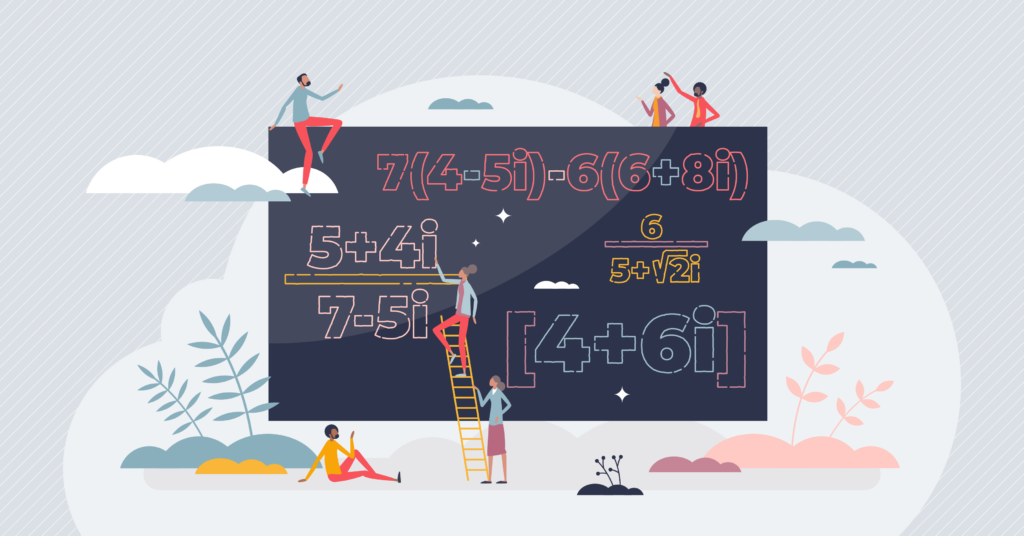Introduction
Problem-based learning (PBL) was first introduced in the 1960s at McMaster University’s medical school as a means of fostering critical thinking and problem-solving skills (Barrows & Tamblyn, 1980). Since then, PBL has been adopted in various disciplines, including engineering, business, and social sciences (Savery, 2006). PBL engages students in active, collaborative learning by presenting them with complex, real-world problems to solve. This process helps students develop critical thinking, collaboration, and self-directed learning skills, which are crucial for success in the modern workforce (Dolmans et al., 2005).
This paper explores how PBL methodologies have evolved to enhance the learner experience and improve learning outcomes in a university context. The paper is divided into three main sections: adapting PBL for contemporary students, the role of technology in supporting PBL, and instructor training and support for effective PBL implementation.
Adapting PBL for Contemporary Students
The diverse backgrounds, learning styles, and expectations of today’s university students necessitate the adaptation of PBL methodologies to ensure inclusive and effective learning experiences (Ertmer & Simons, 2006). Key adaptations include:
Integrating interdisciplinary and transdisciplinary approaches: Many real-world problems require solutions that draw on knowledge from multiple disciplines. Interdisciplinary and transdisciplinary approaches to PBL help students develop the ability to collaborate across disciplines and recognize the interconnectedness of various fields (Woods, 2007).
Cultivating cultural competence: With the increasing globalization of higher education, it is essential to create culturally inclusive PBL environments. This can be achieved by incorporating diverse perspectives and fostering intercultural communication skills (Gulikers et al., 2008).
Promoting social and emotional learning: Integrating social and emotional learning (SEL) into PBL can help students develop self-awareness, empathy, and emotional regulation skills, which contribute to better teamwork, communication, and problem-solving abilities (Brackett et al., 2011).
The Role of Technology in Supporting PBL
Technological advancements have the potential to enhance the PBL process in several ways:
Enhancing collaboration and communication: Online collaboration tools, such as video conferencing platforms and shared documents, can facilitate communication and collaboration among students and between students and instructors (Kirschner et al., 2018).
Access to diverse resources and expertise: Technology can help students access a wide range of resources and expertise, enabling them to explore multiple perspectives and deepen their understanding of complex problems (Wopereis et al., 2010).
Personalized learning: Adaptive learning technologies can tailor instruction to individual students’ needs and preferences, ensuring that they receive the appropriate level of support and challenge throughout the PBL process (Wanner & Palmer, 2015).
Instructor Training and Support for Effective PBL Implementation
The role of the instructor in PBL is critical to the success of the approach. Effective facilitation of PBL requires specific skills and knowledge, including problem design, scaffolding, and assessment (Hmelo-Silver, 2004). Therefore, it is crucial to provide adequate training and support for instructors implementing PBL. Key components of such training and support include:
Professional development: Ongoing professional development programs can help instructors develop the necessary skills and competencies to effectively facilitate PBL. These programs should cover various aspects of PBL, such as problem design, scaffolding techniques, assessment strategies, and the use of technology in PBL (Evensen & Hmelo, 2000).
Collaboration and peer support: Encouraging collaboration and peer support among instructors can facilitate the sharing of best practices, challenges, and insights related to PBL. This can be achieved through regular meetings, workshops, and the use of online platforms for knowledge exchange (Strobel & van Barneveld, 2009).
Institutional support: Universities should provide the necessary resources, infrastructure, and recognition for instructors implementing PBL. This includes dedicated time for PBL planning and assessment, access to technology and resources, and appropriate recognition and incentives for PBL-related work (Hmelo-Silver et al., 2007).
Conclusion
Evolving PBL methodologies can lead to better learner experience and higher outcomes in university education. Adapting PBL to the needs of contemporary students, leveraging technology to support the process, and providing adequate training and support for instructors are essential strategies for achieving these goals. By embracing these strategies, universities can help students develop the critical thinking, collaboration, and self-directed learning skills necessary for success in an increasingly complex and interconnected world.
Case StudY
The following case studies provide real-world examples of how evolving PBL methodologies have been implemented in different university contexts, resulting in enhanced learner experience and improved outcomes.
The first case study explores the use of interdisciplinary PBL in an Environmental Studies program, emphasizing the value of collaboration across disciplines. The second case study focuses on the integration of technology in a business school’s PBL curriculum, showcasing the potential of technology to support learning and collaboration. Finally, the third case study highlights the importance of comprehensive training and support for STEM instructors in a small engineering-focused university, demonstrating the positive impact on the effectiveness of PBL initiatives. Each case study outlines the context, implementation, and outcomes associated with these innovative PBL approaches.
Case Study 1: Interdisciplinary PBL in Environmental Studies
Context
A mid-sized university implemented an interdisciplinary PBL approach within its Environmental Studies program to encourage collaboration among students from various academic backgrounds, including biology, engineering, and social sciences.
Implementation
The PBL initiative involved the design of complex, real-world environmental challenges that required input from multiple disciplines. Students were grouped into diverse teams, and each team was tasked with developing a comprehensive solution to an environmental problem. The teams were guided by faculty members from different departments, who helped students integrate knowledge from their respective fields. Collaboration tools and online resources were provided to support research and communication within the teams.
Outcomes
The interdisciplinary PBL approach led to increased collaboration and communication among students from different academic backgrounds. The students developed a deeper understanding of the complex nature of environmental issues and the importance of interdisciplinary collaboration in addressing such problems. The participating faculty members reported higher levels of student engagement and observed the development of critical thinking and problem-solving skills among the students.
Case Study 2: PBL and Technology in Business Education
Context
A large business school aimed to enhance the learner experience and outcomes by integrating technology into its PBL-based curriculum.
Implementation
The school implemented various technology tools to support the PBL process, including an online platform for accessing diverse resources and expertise, virtual collaboration tools for communication and teamwork, and adaptive learning software for personalized support. Faculty members received training on using these tools effectively in their PBL facilitation.
Outcomes
The integration of technology in PBL resulted in improved student engagement, collaboration, and learning outcomes. Students reported increased access to diverse perspectives and resources, enhanced communication and teamwork, and tailored support throughout the PBL process. Faculty members observed higher levels of critical thinking, problem-solving, and self-directed learning among the students.
Case Study 3: PBL Training and Support for STEM Instructors
Context
A small engineering-focused university sought to improve the effectiveness of its PBL initiatives by providing comprehensive training and support for its STEM instructors.
Implementation
The university developed a professional development program focusing on PBL design, scaffolding, assessment, and technology integration. Instructors participated in regular workshops, peer support groups, and online forums for knowledge exchange. The institution also provided dedicated time for PBL planning and assessment, along with resources and incentives for PBL-related work.
Outcomes
The PBL training and support led to enhanced instructor competence and confidence in facilitating PBL. Instructors reported increased satisfaction with their PBL implementation and observed improvements in student engagement, critical thinking, and problem-solving skills. The university saw a rise in student performance and overall learning outcomes, demonstrating the positive impact of investing in instructor training and support for PBL implementation.
References
Barrows, H. S., & Tamblyn, R. M. (1980). Problem-based learning: An approach to medical education. Springer Publishing Company.
Brackett, M. A., Rivers, S. E., Reyes, M. R., & Salovey, P. (2011). Enhancing academic performance and social and emotional competence with the RULER feeling words curriculum. Learning and Individual Differences, 22(2), 218-224.
Dolmans, D. H., De Grave, W., Wolfhagen, I. H., & Van Der Vleuten, C. P. (2005). Problem-based learning: Future challenges for educational practice and research. Medical Education, 39(7), 732-741.
Ertmer, P. A., & Simons, K. D. (2006). Jumping the PBL implementation hurdle: Supporting the efforts of K-12 teachers. Interdisciplinary Journal of Problem-Based Learning, 1(1), 40-54.
Evensen, D. H., & Hmelo, C. E. (Eds.). (2000). Problem-based learning: A research perspective on learning interactions. Routledge.
Gulikers, J. T., Bastiaens, T. J., & Kirschner, P. A. (2008). Authentic assessment, student and teacher perceptions: The practical value of the five-dimensional framework. Journal of Vocational Education and Training, 60(3), 307-322.
Hmelo-Silver, C. E. (2004). Problem-based learning: What and how do students learn? Educational Psychology Review, 16(3), 235-266.
Hmelo-Silver, C. E., Duncan, R. G., & Chinn, C. A. (2007). Scaffolding and achievement in problem-based and inquiry learning: A response to Kirschner, Sweller, and Clark (2006). Educational Psychologist, 42(2), 99-107.
Kirschner, P. A., Sweller, J., & Clark, R. E. (E. (2018). Efficiency in learning: Evidence-based guidelines to manage cognitive load. John Wiley & Sons.
Savery, J. R. (2006). Overview of problem-based learning: Definitions and distinctions. Interdisciplinary Journal of Problem-based Learning, 1(1), 9-20.
Strobel, J., & van Barneveld, A. (2009). When is PBL more effective? A meta-synthesis of meta-analyses comparing PBL to conventional classrooms. Interdisciplinary Journal of Problem-Based Learning, 3(1), 44-58.
Wanner, T., & Palmer, E. (2015). Personalising learning: Exploring student and teacher perceptions about flexible learning and assessment in a flipped university course. Computers & Education, 88, 354-369.
Woods, D. R. (2007). Problem-based learning: How to gain the most from PBL. Lulu.com.
Wopereis, I. G., Sloep, P. B., & Poortman, S. H. (2010). Weblogs as instruments for reflection on action in teacher education. Interactive Learning Environments, 18(3), 245-261.



